Why a horseback safari is the best way to meet Africa's wildlife
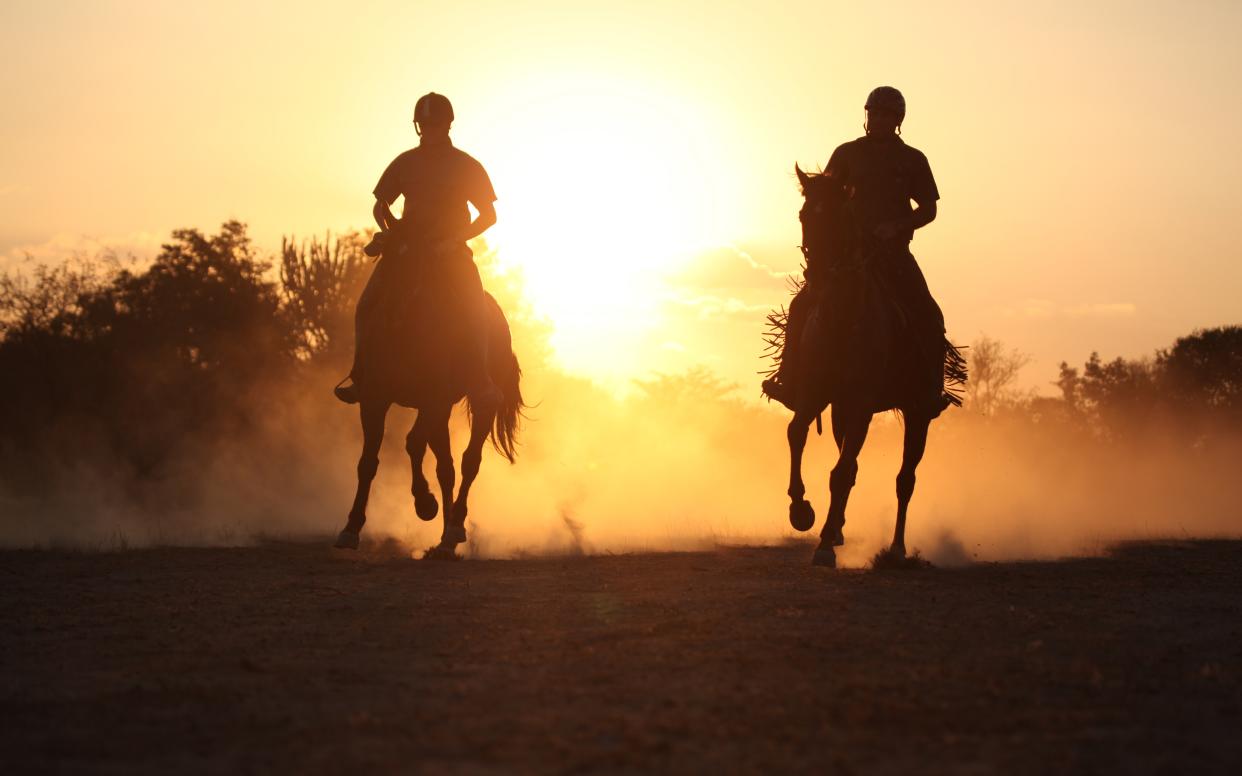
I dug my heels gently into Hercules’s ribs and my horse obediently sidled up to a family of giraffes, gathered underneath the cloud-like foliage of an acacia tree. I’d been on plenty of safaris but I’d never been this close to these astounding animals before, so close that I can marvel at the length of their eyelashes, close enough to hear them crunching on acacia twigs, so close that I have to suppress a laugh when they turn their necks to gawk at me gormlessly.
And thanks to Hercules, I was one of the family. As we trotted alongside the giraffes through rolling grasslands, grazed between them and eventually cantered down the dusty road across the savannah to join a herd of zebra, it finally hit me: I’m a rider. And in South Africa, that meant I was not merely a spectator on a safari; I was a participant.
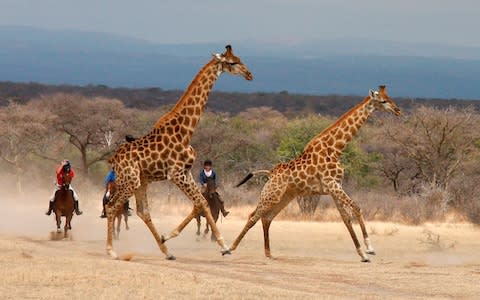
Being a rider took me by surprise, because just four days prior, the only saddle I’d ever been in belonged to George, the donkey at the seaside in Portrush, near where I’d grown up in Northern Ireland. I thought that this dream of roaming freely among giraffes, zebra and gazelles on horseback, fitting in with the herd, would remain precisely that, a dream, an exotic adventure placed just out of reach for non-riders like me.
But there is a unique lodge in the Waterberg region of South Africa, a three-hour drive from Johannesburg, that welcomes families and riding novices alongside experienced riders, committed to making horseback safaris accessible to us all.
Ant’s Nest is owned and operated by Ant and Tessa Baber, whose family have lived in the Waterberg since 1865. The Waterberg biosphere, in Limpopo Province, is one of the country’s lesser-visited geographical regions, a vast, bluish expanse of mountain gorges and rolling bushveld hills, all gently tickled by signal and heather-topped grass. There are no elephants or lions in the Baber’s game reserve and this is precisely what makes it safe and suitable for beginners like me.

Even so, I was nervous. I’ve always loved the thought of being a rider, mastering these beautiful, big, slightly terrifying animals and travelling across the land on pure animal power alone. I was less excited about the learning process itself, going through the inevitable lessons where I’m rubbish, and scared, and frustrated. That was the part I wanted to fast-forward.
The same day I flew in to Johannesburg, the stable manager, Amanda, put me on Hercules, a patient plodder. Hercules was an awful lot bigger than George, the Irish donkey, and I spent the first half-hour convinced there was no way I’d ever get him to do what I wanted. But the beauty of the savannah, the thrill of glimpsing rhinos within that first half-hour, and the silence, distracted me from the butterflies in my stomach.
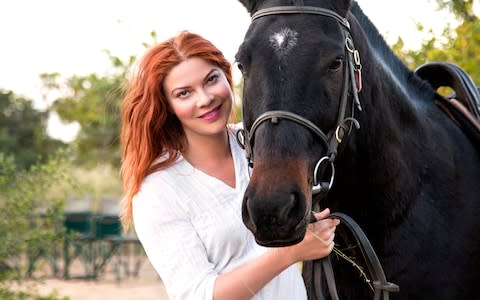
Perhaps learning to ride on a safari, when I had a mission, when it felt worth it, when I was distracted by my spectacular surroundings, was the best way to learn something new as an adult. Infinitely preferable to learning by rote, trotting around an arena, feeling the pressure mount and getting frustrated. Here at Ant’s Nest, I was learning on the job.
It was an older, wiser and more experienced travel presenter, Sarah Siese, who first planted the seed of a horseback safari in my mind last year, as we watched in a mixture of awe and disgust as 16-foot crocodiles deftly picked off unfortunate straggling wildebeest crossing the Mara river in Kenya.
“The thing about a horseback safari is that the wildlife – elephants, lions, zebras, giraffes – respond to you like you’re another animal,” she whispered, as we both peered through our binoculars at the gruesome scene below from the safety of our safari vehicle. “On horseback, you’re one of them and you can interact with them.”
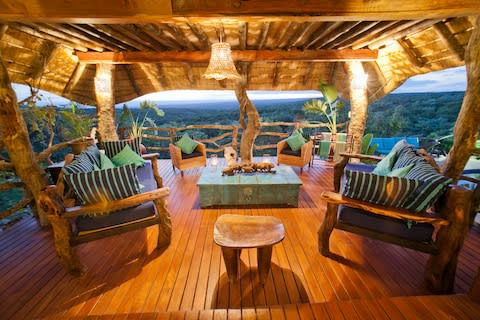
It’s certainly a privilege to find myself so up close and personal with giraffes and zebras as they graze in the bush; I felt like I’d infiltrated a secret animal society, turning up for their masqued ball disguised as a fellow four-legged mammal. And getting truly off-road, well into the thick of the trees is a visceral thrill.
“The game animals just smell the horses, so you’re just a horse to them,” Ant explained, over sundowners at the lodge my first evening. On horseback, we humans have the privilege of doing something we rarely choose to do on this planet; fly under the radar.
This is an active holiday but, compared to most safaris, this is a gloriously relaxed pace, a quieter, slower way of soaking up the savannah. There was no roar of a rusty engine, no smell of diesel and no other tourists chattering loudly or thrusting their cameraphones over your shoulder.
Ant told me that he and Tess chose to specialise in riding safaris, some 22 years ago, because they felt this was “simply the best way to see the wildlife”. And, just as importantly, the best way to ensure that the wildlife aren’t troubled by our presence.
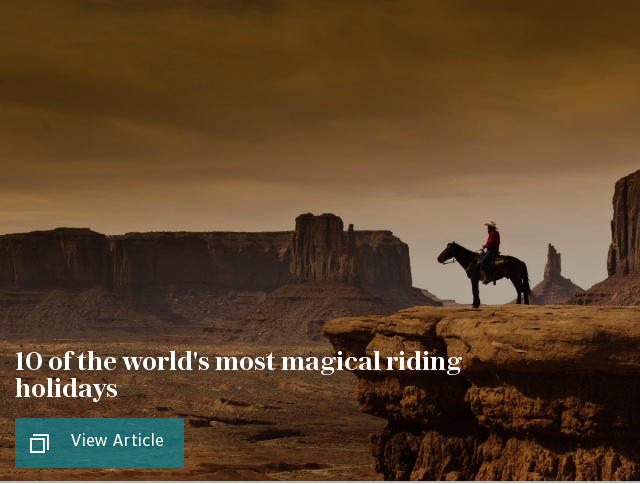
Their reserve has a healthy game menu, including rhino, buffalo, nyala, waterbuck, giraffe, eland, sable, oryx, wildebeest, red hartebeest, kudu, impala, zebra, blesbok, warthog, bushpig and brown hyena, as well as all the smaller animals such as African wildcat, mongoose and some 250 species of birds. Within the reserve, the horses are used to these animals and the other animals are accustomed to the horses.
Some safaris have something of a boot-camp schedule, with pre-breakfast dawn game drives, night drives and a couple of drives in between. By contrast, Ant’s Nest keeps it fittingly leisurely, with a game ride at 8.30am and one again at 3.30pm.

For those travelling with resolute non-riders, they also offer game drives, mountain bike safaris and walking safaris. I took one afternoon off the saddle to do a “Big Five” game drive at a neighbouring reserve, where I saw a 30-strong breeding herd of elephants, a pair of lions and a cheetah with a kill. This is a worthwhile add-on for travellers keen to tick off the Big Five but, after days of freedom on horseback, it’s oddly frustrating to be once again restricted to road access, and the speed of the vehicles and clamour of tourists was a shock to my slow-safari-attuned system.
On my final morning, before breakfast, Ant took me into the bush on foot, to track Sophie, a rhino, and her newborn calf. “The best thing to do if a rhino charges is to lie down flat,” whispered Ant. Really? “If you’re upright, you can get a horn right in the gut,” Ant said, helpfully miming the act of being skewered. “But if you’re lying down, you’ll just get kicked in the face.”
Neither sounded like a great option, to be honest, and I found myself constantly scouring the landscape for climbable trees instead…until we spotted Sophie, at a safe distance, nursing her four-week-old calf, Namib. It turns out that baby rhinos make the cutest sounds in the world, mewling for milk like kittens.
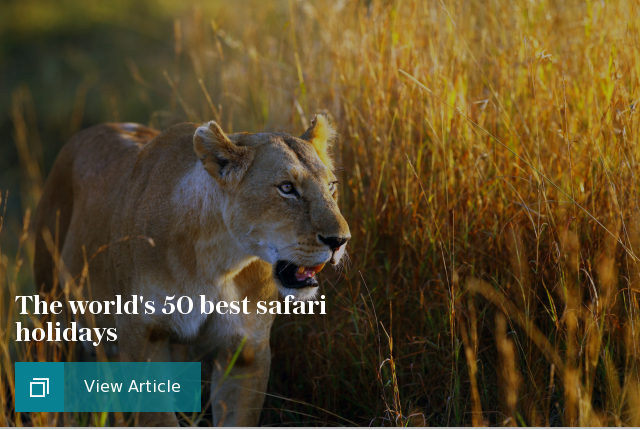
Back in the saddle for one final game ride, I reflected back upon an incredible week becoming a rider in the South African bush. The guides gently encouraged me to progress during every game ride, with short, two-minute trots at a time when we found ourselves on dirt track rather than in dense vegetation.
By my fifth morning, I was cantering, an incredible feeling, almost like surfing through the bush when I finally got the hang of it. This was when I realised that I wouldn’t just be returning from my holiday with happy memories; I’d be returning with a brand new hobby. And I consider a new skill to be the best souvenir of all.
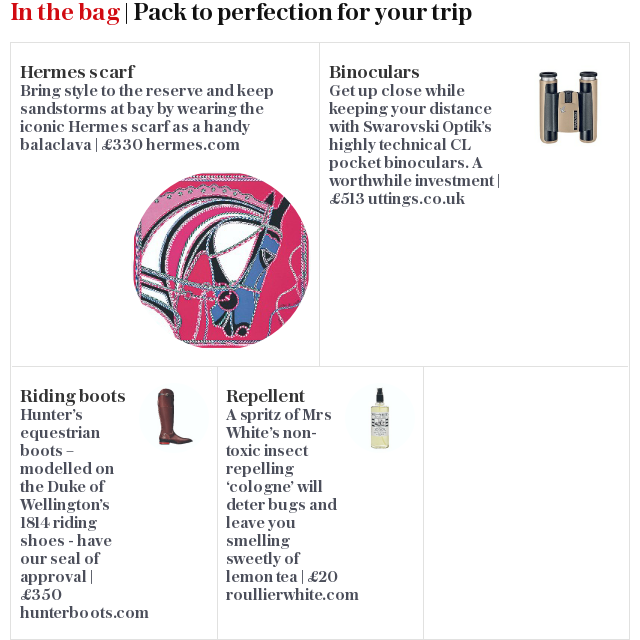
The essentials
A five-day South African riding holiday at Ant’s Lodges with In the Saddle (01299 272997; inthesaddle.com) costs from £1,799 per person including accommodation, riding, safari activities and rhino conservation fee.


